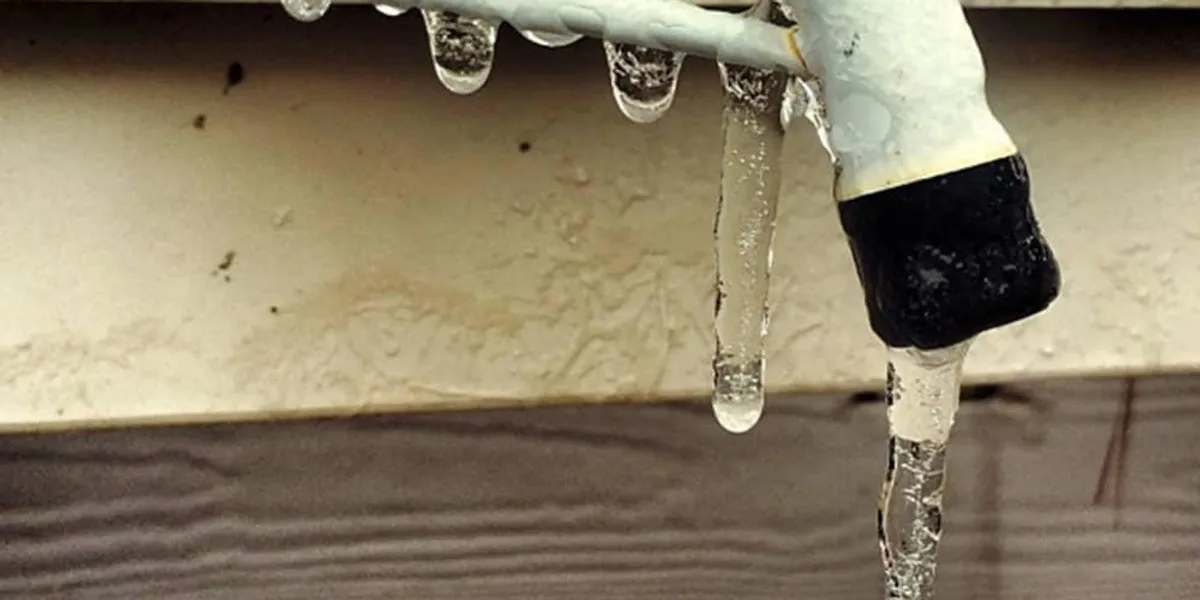Advice for Preventing Frozen Pipes in Cold Weather: Professional Advice
Advice for Preventing Frozen Pipes in Cold Weather: Professional Advice
Blog Article
In this article below you can find a bunch of brilliant ideas on the subject of How to prepare your home plumbing for winter weather.

Winter can damage your plumbing, especially by freezing pipes. Below's exactly how to avoid it from taking place and what to do if it does.
Introduction
As temperature levels decline, the danger of frozen pipelines rises, possibly leading to costly repair work and water damages. Comprehending how to stop icy pipes is vital for homeowners in chilly environments.
Recognizing Icy Pipelines
What causes pipelines to freeze?
Pipelines ice up when subjected to temperatures below 32 ° F (0 ° C) for prolonged periods. As water inside the pipelines ices up, it broadens, taxing the pipeline walls and potentially causing them to burst.
Risks and damages
Icy pipelines can cause water system disturbances, property damage, and expensive repair work. Burst pipelines can flooding homes and create substantial structural damage.
Indicators of Frozen Piping
Identifying frozen pipelines early can avoid them from bursting.
How to determine icy pipelines
Seek decreased water flow from taps, uncommon smells or sounds from pipelines, and visible frost on exposed pipelines.
Prevention Tips
Protecting susceptible pipelines
Wrap pipelines in insulation sleeves or utilize heat tape to safeguard them from freezing temperatures. Focus on pipes in unheated or outside locations of the home.
Home heating techniques
Maintain interior rooms appropriately warmed, particularly locations with plumbing. Open up closet doors to allow warm air to circulate around pipes under sinks.
Securing Outside Pipes
Yard hoses and outdoor faucets
Disconnect and drain garden tubes prior to winter months. Mount frost-proof faucets or cover outdoor faucets with insulated caps.
What to Do If Your Pipelines Freeze
Immediate activities to take
If you presume frozen pipelines, maintain faucets open to ease stress as the ice melts. Use a hairdryer or towels taken in hot water to thaw pipes gradually.
Long-Term Solutions
Structural changes
Think about rerouting pipes far from exterior walls or unheated locations. Add added insulation to attics, cellars, and crawl spaces.
Upgrading insulation
Purchase top quality insulation for pipelines, attics, and walls. Appropriate insulation aids maintain constant temperature levels and reduces the danger of icy pipelines.
Final thought
Preventing frozen pipelines needs aggressive steps and fast feedbacks. By comprehending the reasons, indicators, and preventive measures, house owners can shield their pipes throughout winter.
6 Proven Ways to Prevent Frozen Pipes and Protect Your Home
Disconnect and Drain Garden Hoses
Before winter arrives, start by disconnecting your garden hoses and draining any remaining water. Close the shut-off valves that supply outdoor hose bibs and leave the outdoor faucet open to allow any residual water to drain. For extra protection, consider using faucet covers throughout the colder months. It’s also important to drain water from any sprinkler supply lines following the manufacturer’s directions.
Insulate Exposed Pipes
Insulating your pipes is an effective way to prevent freezing. Pipe insulation is readily available at home improvement stores and is relatively inexpensive. Pay close attention to pipes in unheated areas such as the attic, basement, crawl spaces, or garage. Apply foam insulation generously to create a buffer against the cold. You can also wrap your pipes in heat tape or thermostat-controlled heat cables for added warmth.
Seal Air Leaks
Inspect your home for any cracks or openings that could let in cold air. Seal any holes around the piping in interior or exterior walls, as well as the sill plates where your home rests on its foundation. Additionally, make sure to keep your garage door closed unless you’re entering or exiting. Leaving it open creates a significant air leak that can lead to frozen pipes.
Allow Warm Air Circulation
During cold snaps, it’s essential to allow warm air to circulate evenly throughout your home. Leave interior doors ajar to promote better airflow. Open kitchen and bathroom cabinets to help distribute heat consistently around the rooms. If you have small children or pets, be sure to remove any household chemicals or potentially harmful cleaners from open cabinets for safety.
Let Faucets Drip
A small trickle of water can make a big difference in preventing ice formation inside your pipes. When temperatures drop significantly, start a drip of water from all faucets served by exposed pipes. This continuous flow helps prevent the water from freezing. Additionally, running a few faucets slightly can relieve pressure inside the pipes, reducing the chances of a rupture if the water inside does freeze.
https://choateshvac.com/6-proven-ways-to-prevent-frozen-pipes-and-protect-your-home/
:strip_icc()/snow-outdoor-faucet-pipes-4af65d1e5e904fb1aa7bf74071fe5d89.jpg)
Do you appreciate more info about How to Prevent Your Pipes From Freezing? Leave feedback down below. We would be happy to hear your feelings about this blog post. We hope to see you back again in the near future. So long as you enjoyed reading our blog entry kindly do not forget to pass it around. Thank you for going through it.
Click Here To Find Out More Report this page